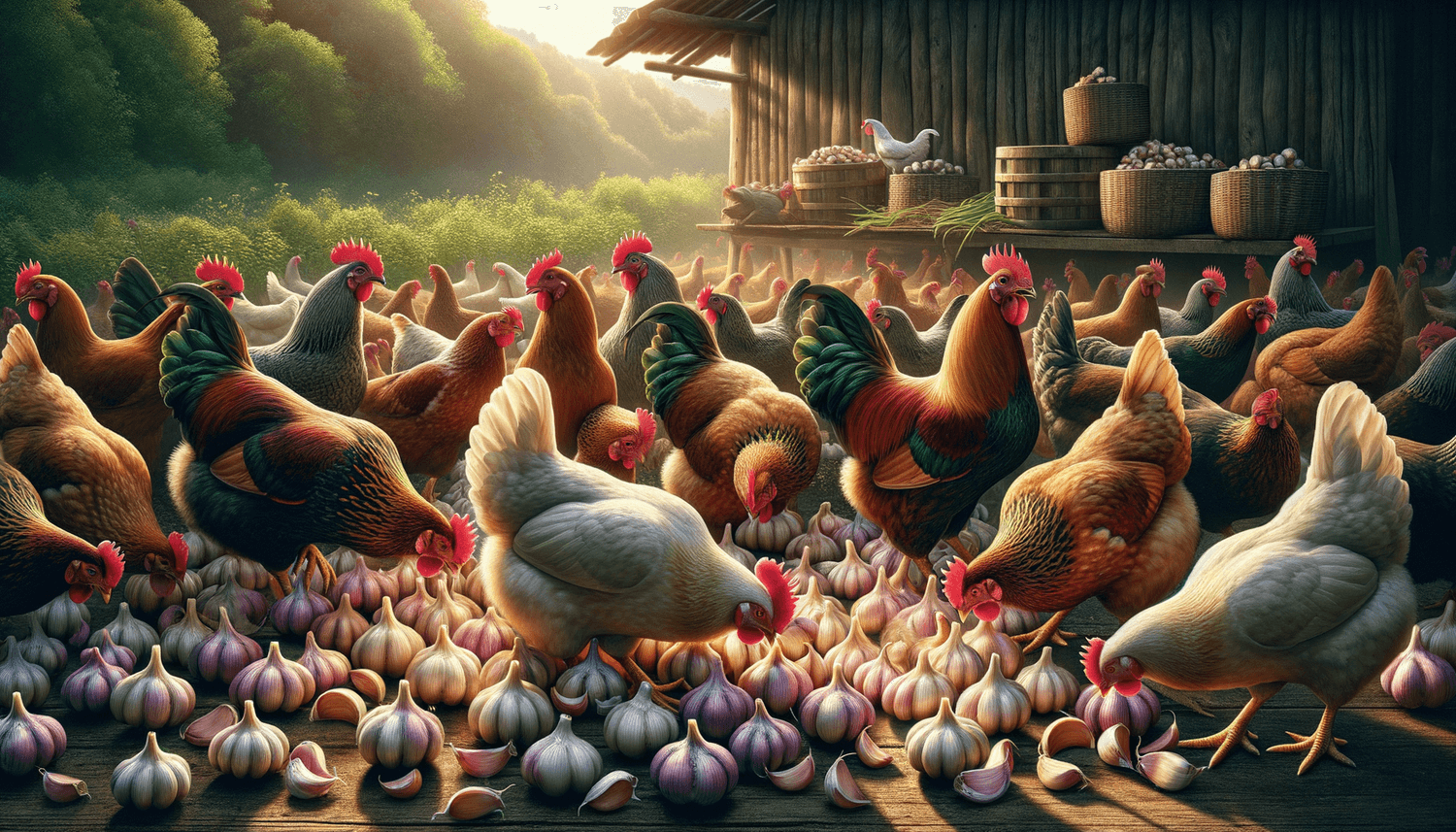Yes, chickens can eat garlic skins. While garlic is sometimes used in small amounts as a natural remedy to boost the immune system of chickens and act as a repellent for pests, it’s important to note that the skins are not as nutritionally dense as the garlic cloves themselves. Garlic skins are safe for chickens to consume in moderation but should not form a large part of their diet.
Quick Summary
- Chickens can eat garlic skins.
- Garlic skins are safe, but offer less nutritional value compared to the cloves.
- Potential benefits include immune system boost and pest repellant; few risks if fed in moderation.
- Feed sparingly, mixed with other food items, to avoid digestive issues.
Overview of Garlic Skins
Garlic skins, the papery outer coverings of garlic cloves, are commonly discarded during food preparation. While not as rich in nutrients as the cloves themselves, garlic skins contain trace amounts of fiber and antioxidants. The skins function primarily as a protective layer for the more nutritious inner parts.
Benefits and Risks of Garlic Skins for Chickens
Feeding garlic skins to chickens can help bolster their immune system and may work as a natural pest deterrent. However, excessive intake can result in potential health risks, such as anemia or digestive issues, due to the strong compounds found in garlic. Moderation is key when introducing garlic skins to a chicken’s diet.
Feeding Guidelines
When feeding chickens garlic skins, do so sparingly. Mix the skins with other food items to ensure chickens are not ingesting large amounts at once. It’s recommendable to monitor the flock for any adverse reactions when introducing garlic skins to their diet for the first time.
Alternatives
If there is concern about the risks associated with garlic skins, consider offering chickens other immune-boosting foods such as oregano, thyme, or various leafy greens which provide nutrients with minimal risk.
Expert Opinions
Poultry nutritionists often agree that natural foods like garlic can have health benefits for chickens when used in moderation. It’s encouraged to consult a veterinarian for tailored advice on adding garlic skins to a flock’s diet, especially if the chickens are already under a specific nutrition plan or health treatment.
Frequently Asked Questions
Readers who delve into the details about feeding garlic skins to chickens often have specific questions regarding the practice. Here are some common inquiries and their answers:
How often can I feed my chickens garlic skins?
Garlic skins should be given as an occasional treat, not a staple of the diet. Once or twice a week in small amounts is typically sufficient.
Can garlic skins repel pests from my chickens?
Yes, there is anecdotal evidence that garlic can act as a natural pest repellent, possibly making garlic skins a low-cost and natural option for pest control.
Are there any chickens that should not eat garlic skins?
As with any dietary change, chickens with pre-existing health conditions should be closely monitored when garlic skins are introduced, and owners should consult their veterinarian. Additionally, baby chicks should not be given garlic skins as their digestive systems are more sensitive.

















